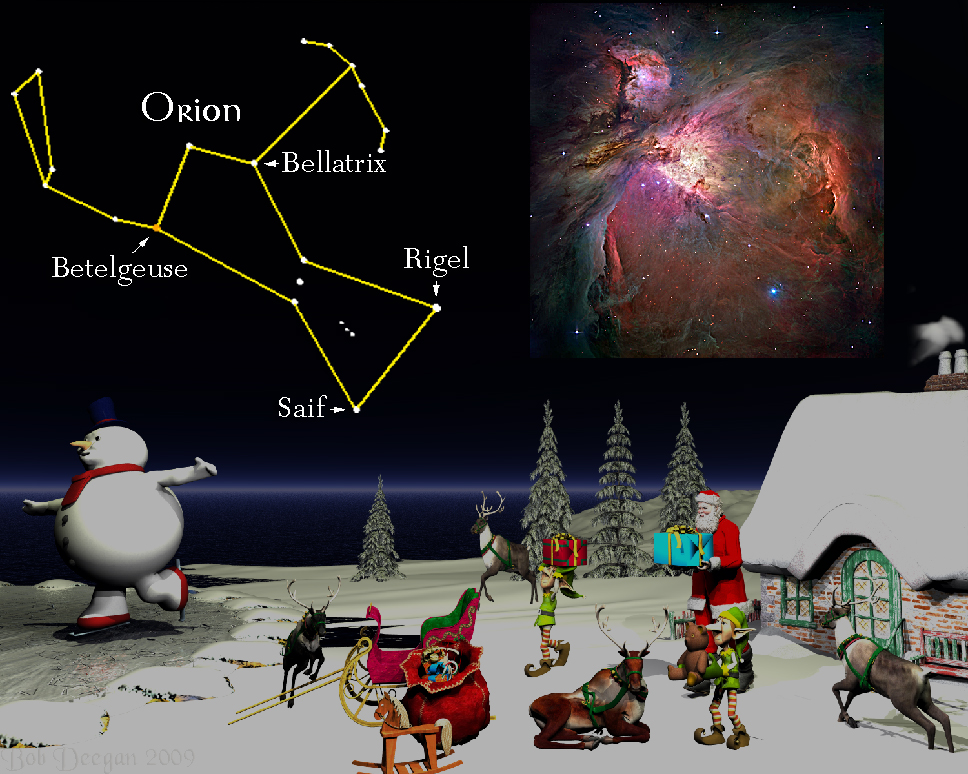
For the week including December 25, 2009

THE GREAT NEBULA
Now that winter’s here, the stars of Orion, the Hunter, gleam above the eastern horizon. Orion is the key constellation of this season’s skies and, after the Big Dipper, its stars are the most easily recognized. Locating it presents little difficulty. Orion, the Hunter, has an hourglass shape marked in opposing corners by the red giant star, Betelgeuse, and the brilliant blue-white, Rigel. In addition, the stars of Orion’s belt set this constellation apart from all the rest. These stars are all the same brightness and Orion is the only place in the sky where you can find three stars in a row that all look the same. At one time, the belt stars were known by various individual names, but now each star carries a name that used to refer to their group. They are, from top to bottom, Mintaka, the Pearl Necklace, Alnilam, the Belt, and Alnitak, the Girdle.
These stars also serve as guides to finding one of the most wonderful sights to see in a small telescope, the Great Orion Nebula. On a clear night, look under the belt stars to see three fainter stars that form Orion’s dagger. If you have good vision, examine the middle star in the dagger carefully. It will look strangely hazy compared to the other stars. That’s because this isn’t really a “star” at all! A pair of binoculars will reveal more of its true nature. You will see a glowing mist of gray-green light with a bright center. To get the full visual effect of the Great Nebula, use a telescope. You probably won’t get as good a view as the one at right in our illustration that was obtained with the Hubble Space Telescope, but it will be very impressive nevertheless. Under higher magnification, the foggy patch becomes a gigantic swirling complex of luminous gases bursting outward from a stellar nursery that contains some of the newest stars in our galaxy. What had appeared as a bright center becomes a tight group of four brilliant, young stars grouped in an oblong pattern. These stars, called the Trapezium, have condensed out of the surrounding clouds of gas and dust in a process of star formation that will continue for millions of years until that area of space has insufficient material to carry on. The brilliant Trapezium group sits right on top of a nest of over three hundred newborn stars and a close look under higher magnification reveals over a dozen nascent stars grouped around its brightest members. Other Hubble Space Telescope photographs of these infant stars have provided important clues as to how stars develop and the gaseous envelopes surrounding them reveal that they are forming planetary systems.
The Great Orion Nebula is one outstanding feature of a vast complex of gases and dust that stretches across the entire constellation. For hundreds of years astronomers have studied this cloud and some peculiarities that reside in it, but the prevailing research points out that clouds like the one in Orion may be the basic building blocks of just about everything we see in the universe.
Unless otherwise indicated, all content of this web site is the copyright of Robert Deegan and all rights are reserved.
For more information, or to comment, please contact: Bob@NightSkies.org